You can connect your Amazon Fire Stick to your soundbar or AV Receiver via HDMI ARC/eARC, or S/PDIF (Sony/Philips Digital Interface). They are two different solutions — the connection required for the setup would be different, and they may not support the same audio formats.
We will discuss the differences between them and offer a few options for your setup. Firstly, we shall start with two questions — What are ARC and eARC? What’s S/PDIF?
HDMI ARC/eARC and S/PDIF
We do have published two blogs introducing ARC/eARC for the home theater and differences between them which you can refer to if you need a detailed explanation of ARC and eARC.
Both ARC/eARC and S/PDIF are used for audio transmission. The main difference is that ARC (Audio Return Channel) or eARC (Enhanced Audio Return Channel) are features built into the HDMI, while S/PDIF is a type of digital audio standard for consumer audio equipment to connect to speakers over short distances.
HDMI ARC/eARC: Simpler Setup
The reason why ARC and eARC are created is to make the connection more simple by using a sole HDMI cable to transfer audio, video, and control (via CEC) signals all at once. This could streamline your setup by using fewer cables. What’s more, HDMI eARC has better bandwidth to handle uncompressed 7.1 channel audio formats that ARC and S/PDIF cannot.
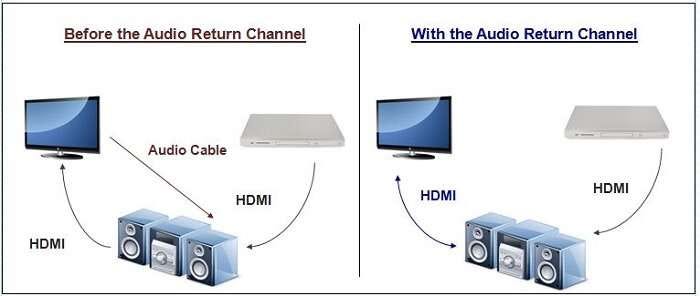
S/PDIF: Good Compatibility
S/PDIF is a type of audio port widely used to transmit audio signals from TVs, Blu-ray players, audio interfaces to soundbars, and AV Receivers. If you are using ARC or eARC for the audio transmission, you shall make sure that your equipment in the setup supports HDMI ARC or eARC.
Unlike HDMI, S/PDIF focuses on audio transmission and has no interest in multitasking. The advantage is that it’s more likely to work with your devices as long as there is a S/PDIF port.
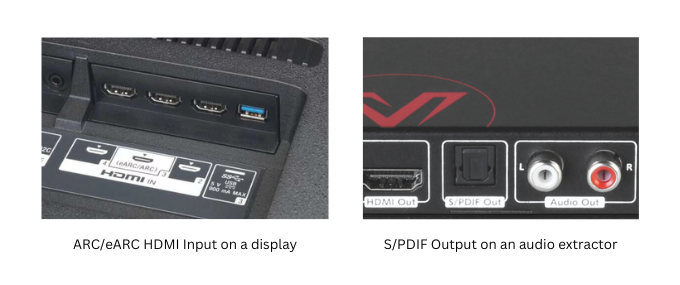
HDMI vs S/PDIF: Supported Audio
If you are building up your home theater system and would like to choose one of them as the solution, you shall know exactly what audio formats they support. Depending on what surround sound system you are applying in your home theater setup, you’ll find the solution that fits you most.
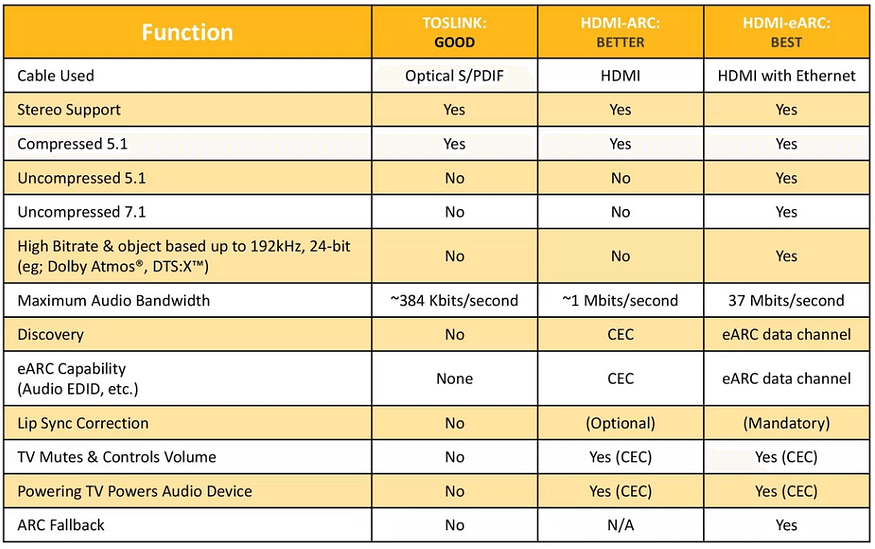
Note: Toslink is taken interchangeably with S/PDIF here in this discussion, while they are not exactly the same thing. More comparisons can be found in this article.
Basically, HDMI ARC was created to replace the S/PDIF connection and simplify the home theater setup. They both support stereo and popular 5.1-channel audio formats, for example, Dolby Digital, DTS 5.1, and PCM.
HDMI eARC is the more capable star which supports uncompressed 7.1, and high-bitrate audio formats such as DTS:X. With HDMI eARC, consumers are able to build an advanced movie theater in their living room with a surround system that carries so many details and makes the experience so immersive.
Connecting Firestick to the Soundbar/AVR
The Amazon Fire Stick will be mounted to your TV and powered as it should be. And the key is how to connect your soundbar or surround receiver to your TV so that the sound from the Fire Stick can be transferred and amplified via your surround sound system.
One thing you shall be clear, how far it would be between your TV and the sound bar/AVR. Most HDMI 2.0 (ARC) cables work for 10 meters, HDMI 2.1 (eARC) for 5 meters, and Toslink (ARC) for 5–10 meters. If the distance exceeds the limit, you may need an HDMI extender.
Firstly, let’s see what you can do when the distance is less than five or ten meters.
Home Theater Setup within 15 Meters
If you’re connecting your soundbar or AV Receiver 3 meters away from your TV with a standard 5.1 surround sound system, using HDMI ARC or S/PDIF connection does not have much difference. The only difference is that by using HDMI ARC, you will be able to control your soundbar (basically power on/off, volume up/down) with your TV remote thanks to the CEC control signals.
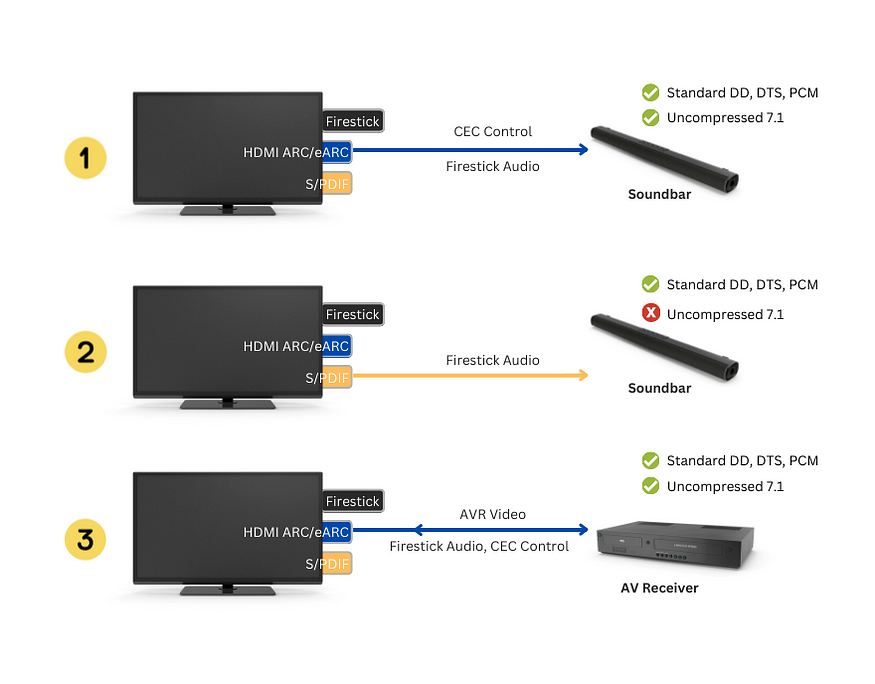
While if you’re using an advanced Denon AVR that supports up to ultra HD 11.2 Channel, you shall use HDMI eARC to make the best out of your money.
Home Theater Setup for Long Distances
Sometimes the AV Receivers and source devices like the Blu-ray player, DVD player, TV boxes even a PC or laptop would be moved away from the TV to a separate media room for central management. This is a good way to make the living room or the home theater neat and tidy, and more comfortable with less noise and heat.
As the distance exceeds the limit of HDMI cables and S/PDIF cables, I would recommend you use an ARC/eARC HDMI extender for the setup.
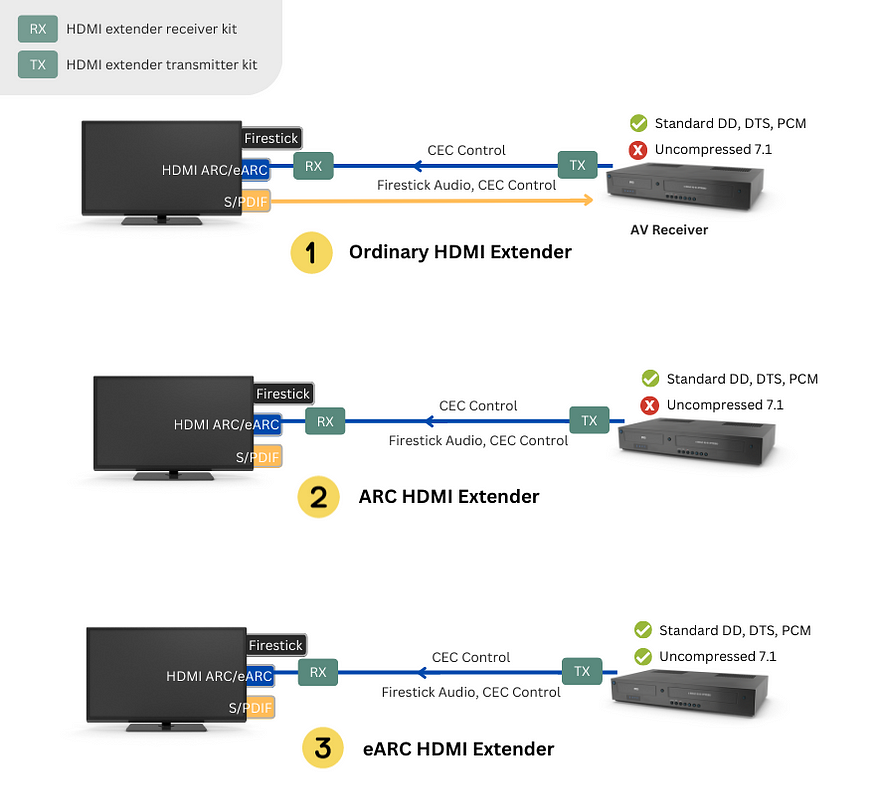
Basic HDMI extenders may not support the HDMI ARC/eARC feature, so you have to connect an extra S/PDIF cable (due to the long distance, you may need to find ways to extend the audio cable as well) for the TV sound to transmit back to the surround sound system.
An ARC HDMI extender offers an audio return channel and saves you from connecting this audio cable. One HDMI cable would take care of it all. If you need high-quality uncompressed surround sound, an eARC HDMI extender will deal with that.
Conclusions
Utilizing HDMI ARC and eARC is good to streamline your setup. Don’t forget to make sure that your devices support ARC or eARC features. Since it is an added function, it’s not always built into the HDMI standard, even though it’s an HDMI 2.1 device that supports up to 8K.
If you have any questions concerning our ARC/eARC HDMI extenders in your home theater setup, please feel free to contact us at [email protected]. Our support team is willing to help.
Source: https://www.avaccess.com/blogs/guides/connect-firestick-to-soundbar-or-receiver/

